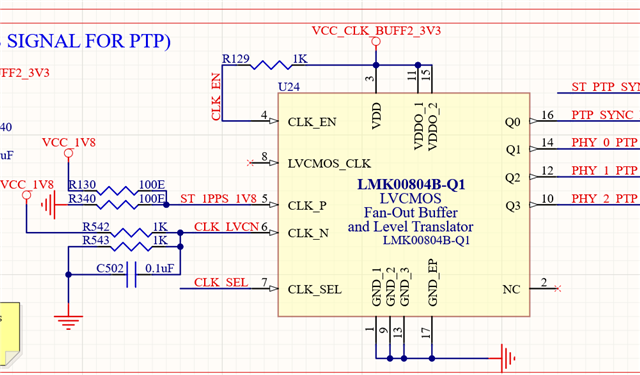Other Parts Discussed in Thread: LMK00804B-Q1, CDCBT1001, LMK00804B
My requirement is to input a 1.8V 1PPS signal to LVCMOS Clock Buffer and 4x 3.3V 1PPS output.
LMK1C1104A was the recommended part by the customer support.
I just need to clarify some points.
This is the related question of
VIH = 0.7 * 3.3 = 2.31V
VIL = 0.3 * 3.3 = 0.99V
@VDD =3.3V
and my input is 1.8V 1PPS signal
Will there be any slew rate or voltage shift issue? so that we need to take care something.
Is the bias resistor R1 and R2 100Ohm and AC coupling cap 0.1uF




